Abstract
Six fungal species, Penicillium brevicompactum, P. glabrum, P. roqueforti, Aspergillus flavus, A. versicolor, and A. candidus, were inoculated on moistened and autoclaved wheat and oat grains. They were cultivated in glass vessels provided with an inlet and outlet for air. Air was passed through the vessels to collect volatile fungal metabolites on porous polymer adsorbents attached to the outlet. Samples were collected at two fungal growth stages. Adsorbed compounds were thermally desorbed, separated by gas chromatography, and identified by mass spectrometry. Differences in the production of volatile metabolites depended more on the fungal species than on the grain type. The fungal growth stage was not an important factor determining the composition of volatiles produced. 3-Methylfuran was produced in similar amounts regardless of the fungal species and substrate (oat versus wheat). The production of volatile metabolites was compared with the production of ergosterol and CO2 and the number of CFU. The production of volatile metabolites was more strongly correlated with accumulated CO2 production than with actual CO2 production and more strongly correlated with ergosterol contents of the grain than with numbers of CFU.
Full text
PDF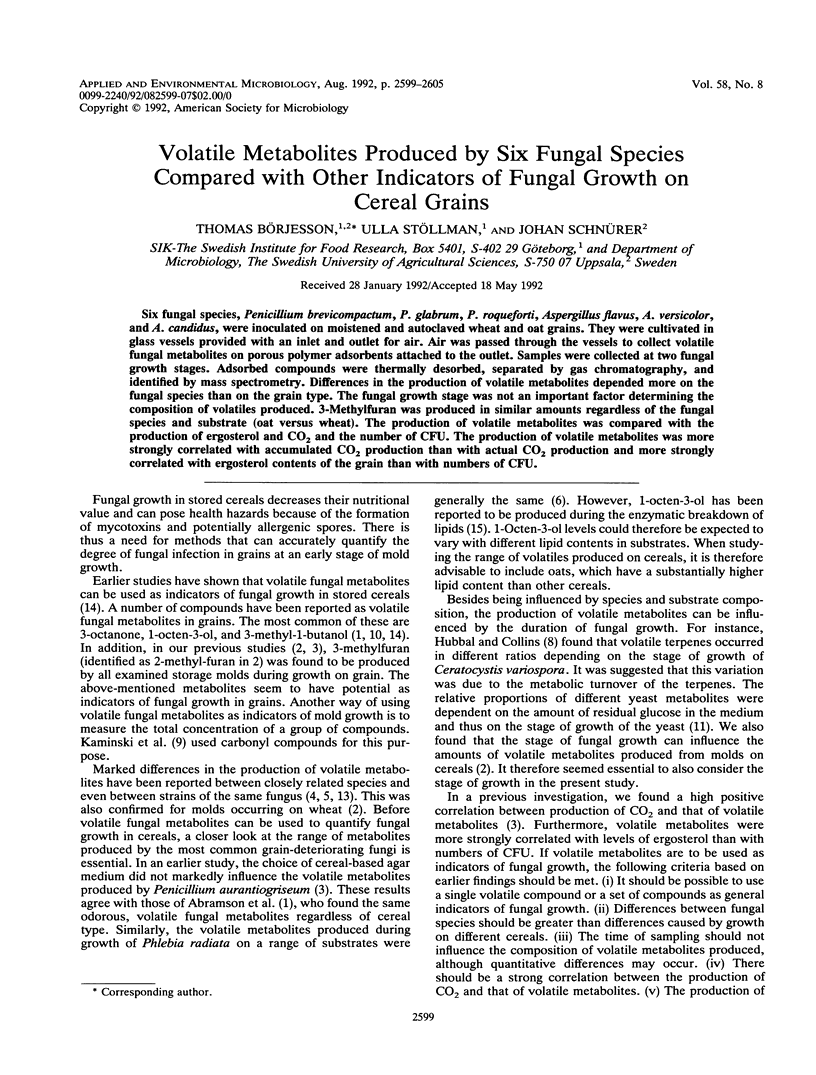
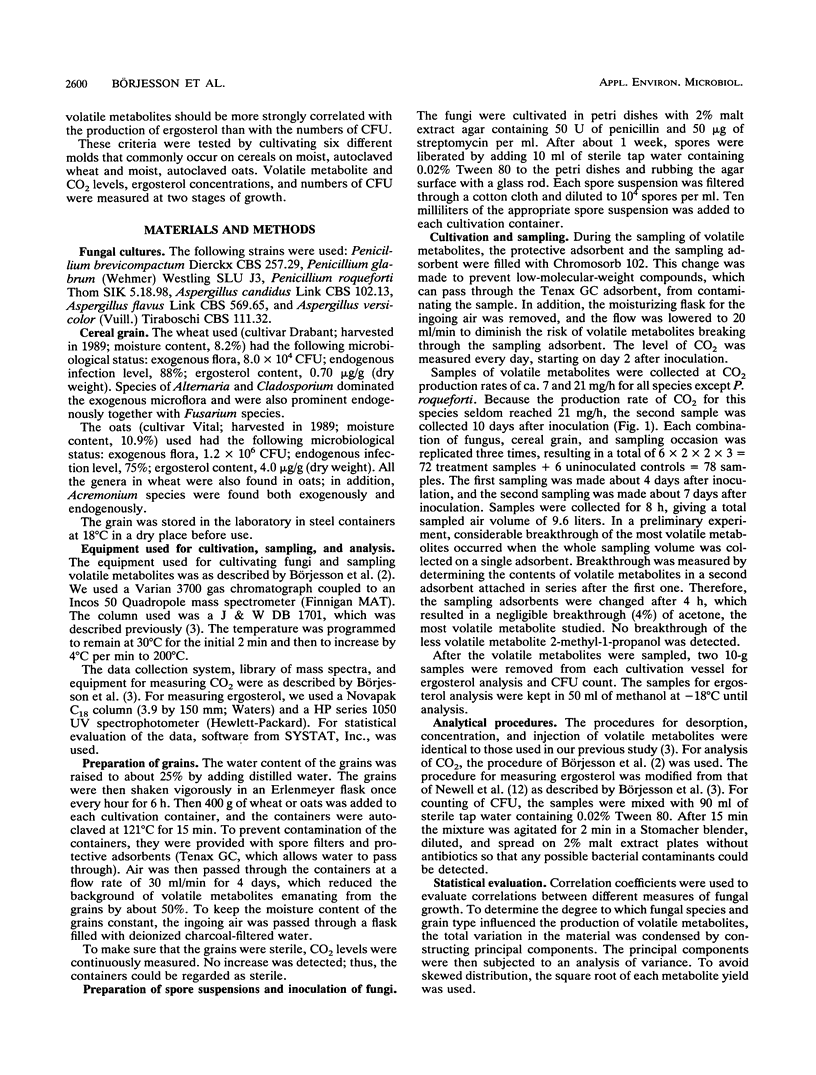
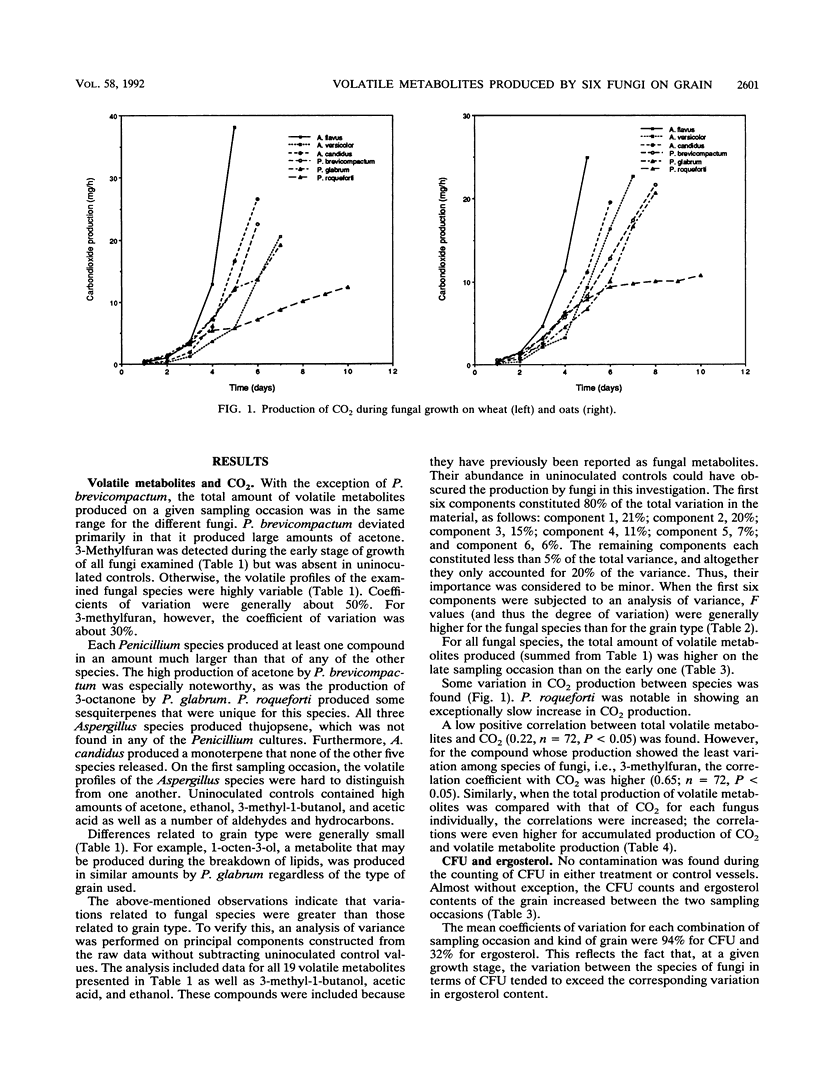

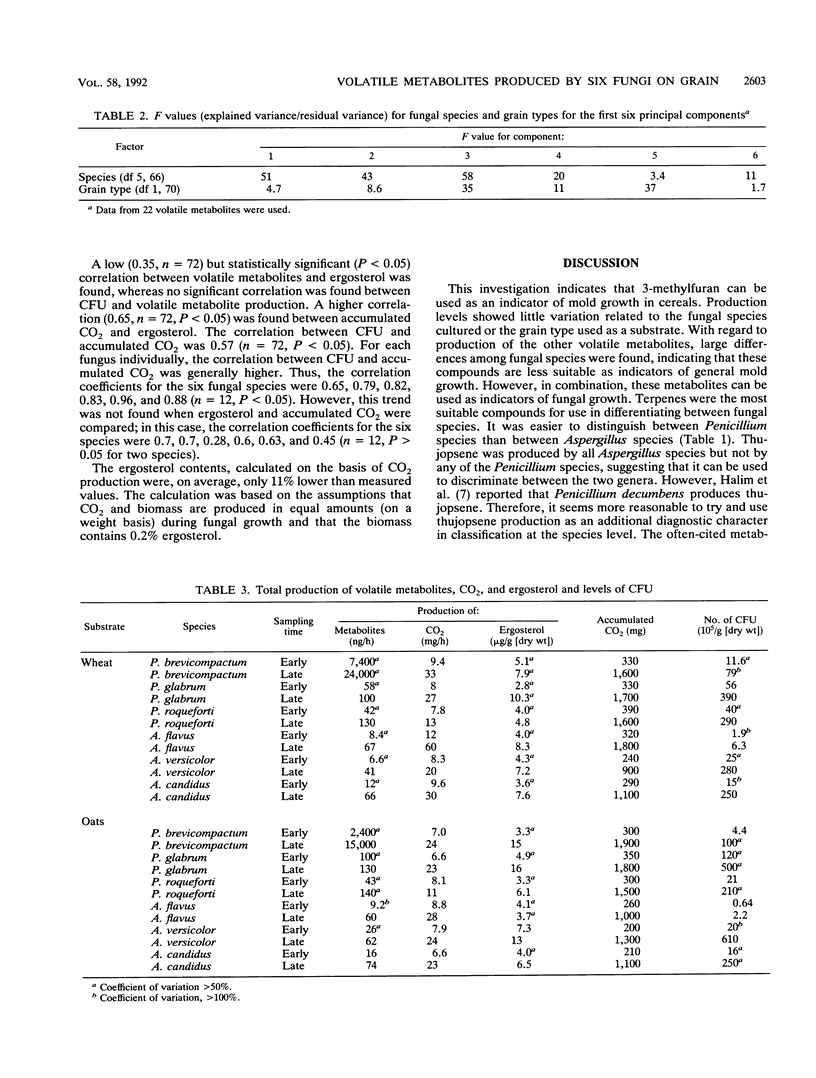
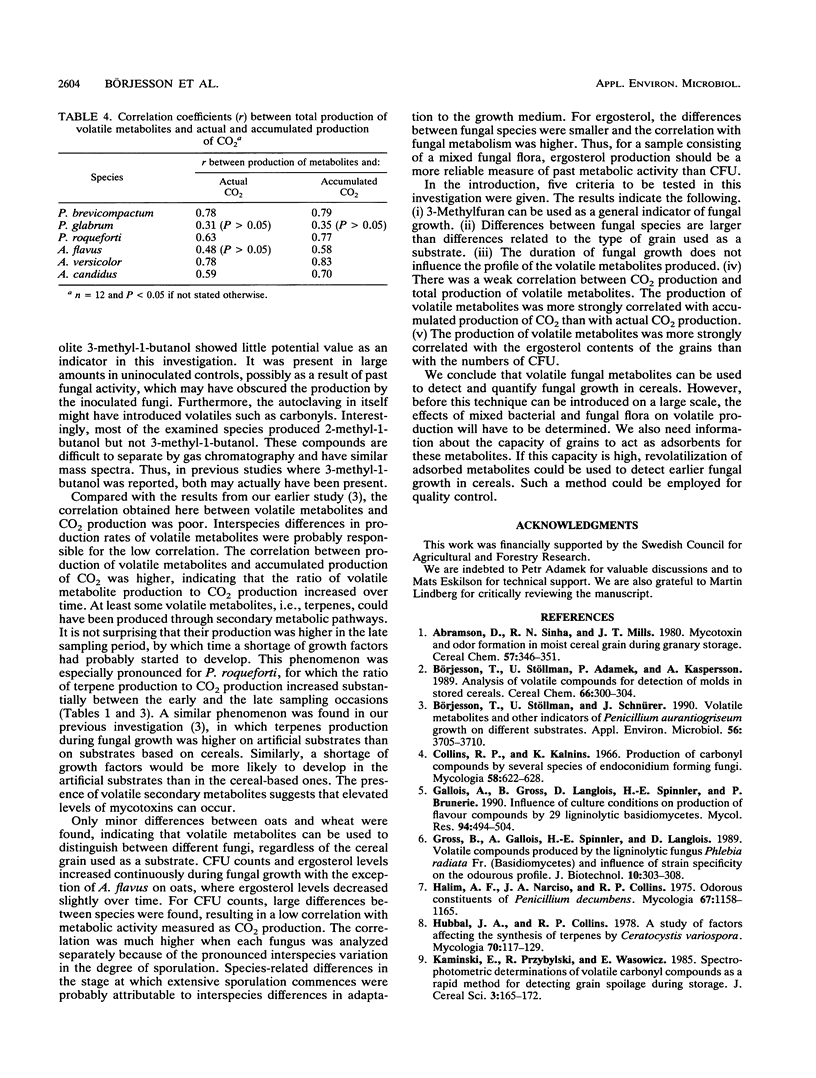
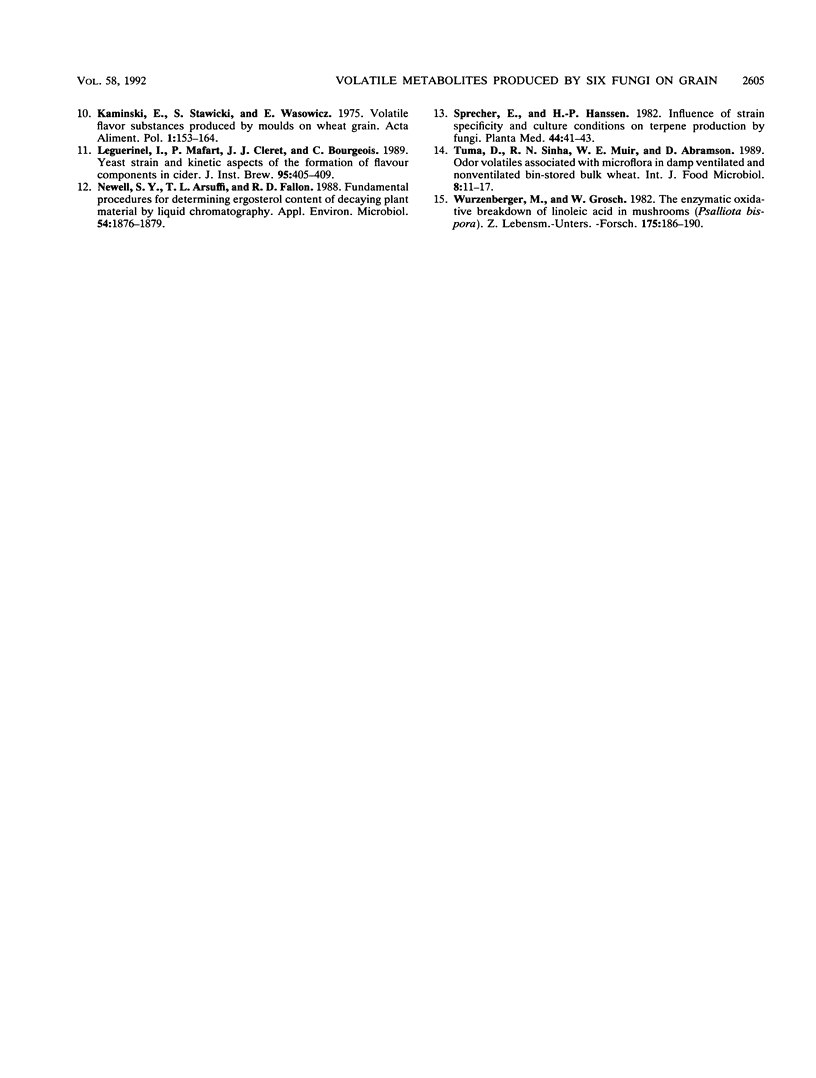
Selected References
These references are in PubMed. This may not be the complete list of references from this article.
- Börjesson T., Stöllman U., Schnürer J. Volatile metabolites and other indicators of Penicillium aurantiogriseum growth on different substrates. Appl Environ Microbiol. 1990 Dec;56(12):3705–3710. doi: 10.1128/aem.56.12.3705-3710.1990. [DOI] [PMC free article] [PubMed] [Google Scholar]
- Collins R. P., Kalnins K. Production of carbonyl compounds by several species of endoconidium-forming fungi. Mycologia. 1966 Jul-Aug;58(4):622–628. [PubMed] [Google Scholar]
- Halim A. F., Narciso J. A., Collins R. P. Odorous constituents of Penicillium decumbens. Mycologia. 1975 Nov-Dec;67(6):1158–1165. [PubMed] [Google Scholar]
- Newell S. Y., Arsuffi T. L., Fallon R. D. Fundamental procedures for determining ergosterol content of decaying plant material by liquid chromatography. Appl Environ Microbiol. 1988 Jul;54(7):1876–1879. doi: 10.1128/aem.54.7.1876-1879.1988. [DOI] [PMC free article] [PubMed] [Google Scholar]
- Sprecher E., Hanssen H. P. Influence of strain specificity and culture conditions on terpene production by fungi. Planta Med. 1982 Jan;44(1):41–43. doi: 10.1055/s-2007-971398. [DOI] [PubMed] [Google Scholar]
- Wilkins C. K., Scholl S. Volatile metabolites of some barley storage molds. Int J Food Microbiol. 1989 Feb;8(1):11–17. doi: 10.1016/0168-1605(89)90075-5. [DOI] [PubMed] [Google Scholar]


